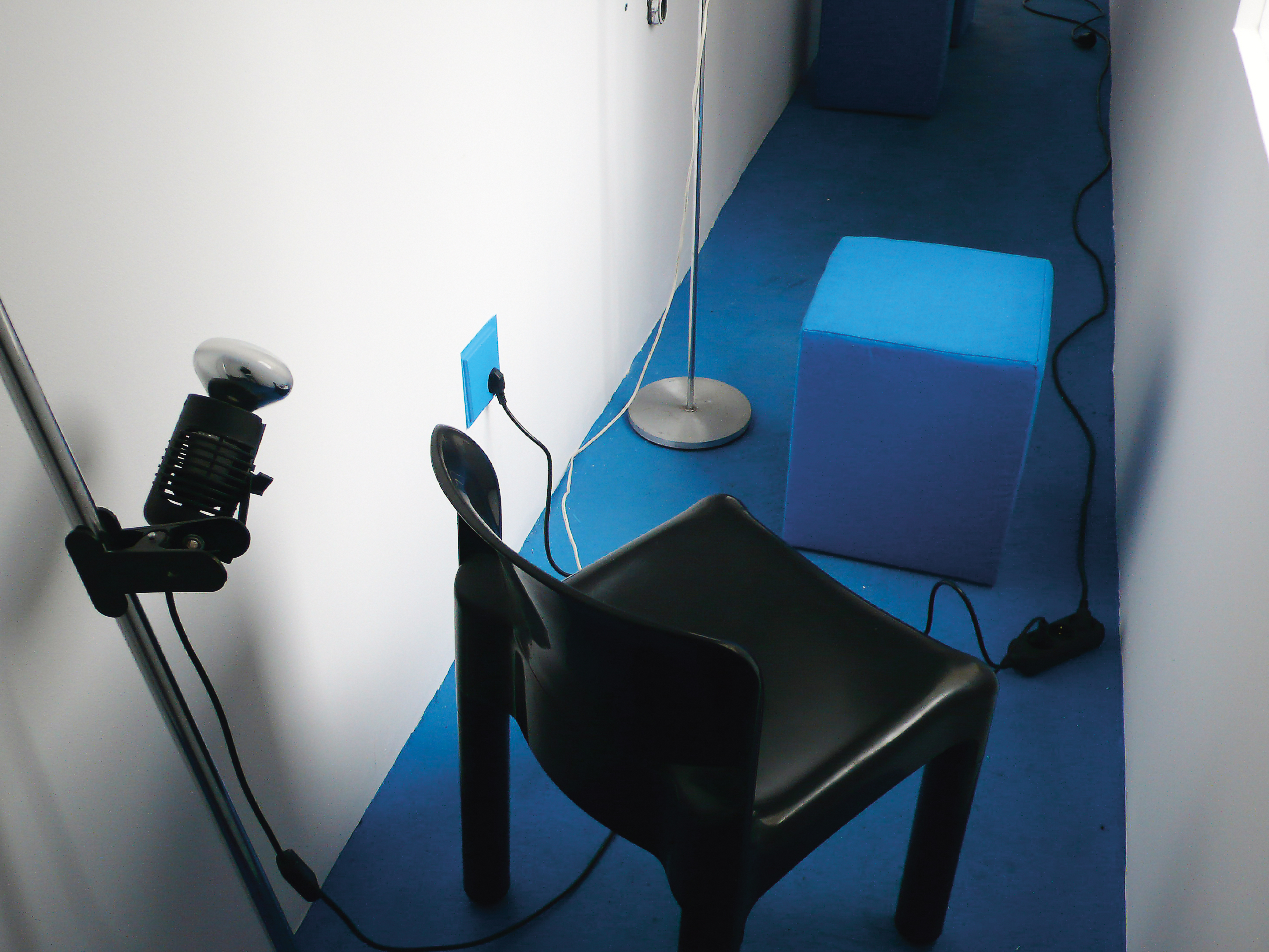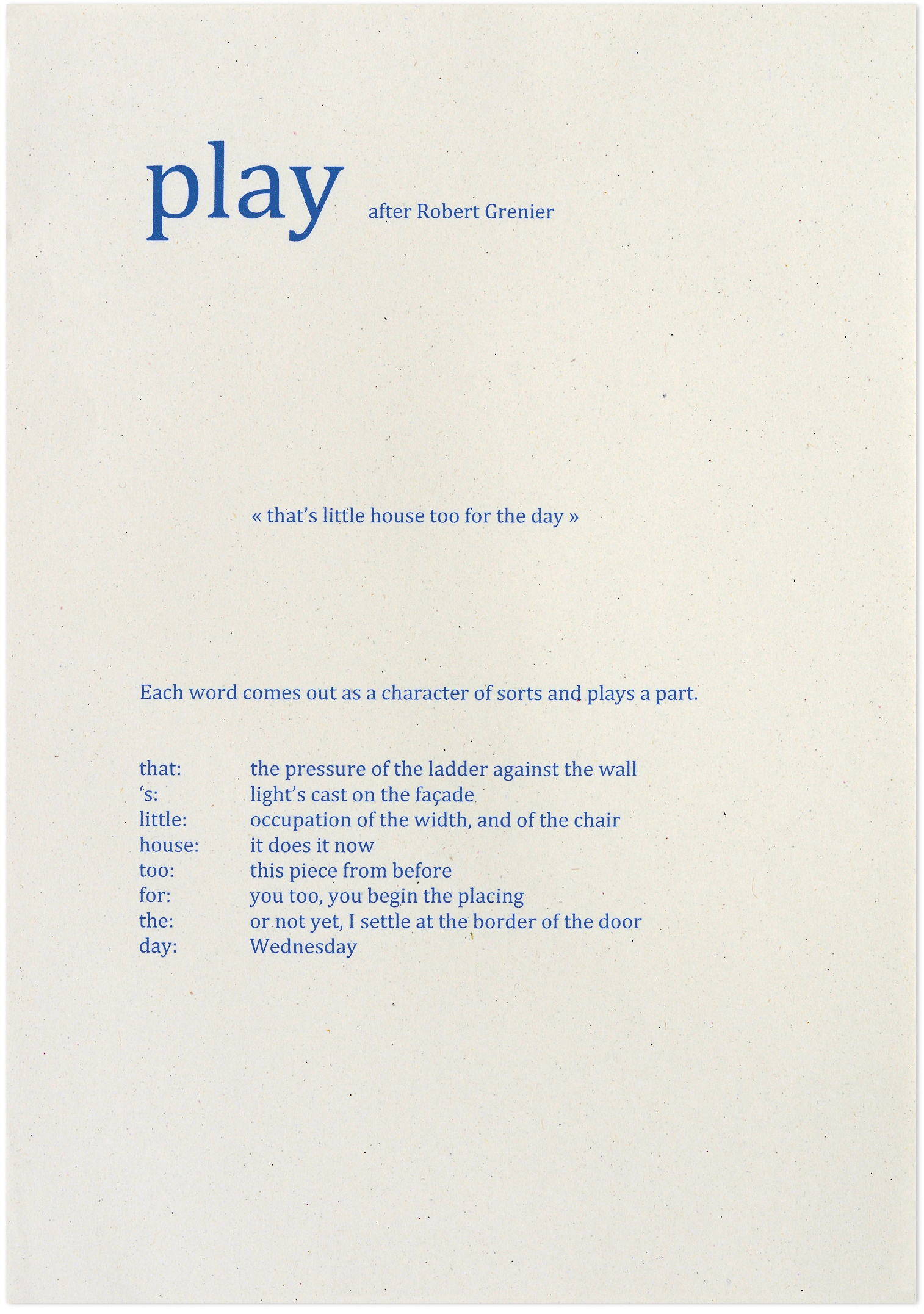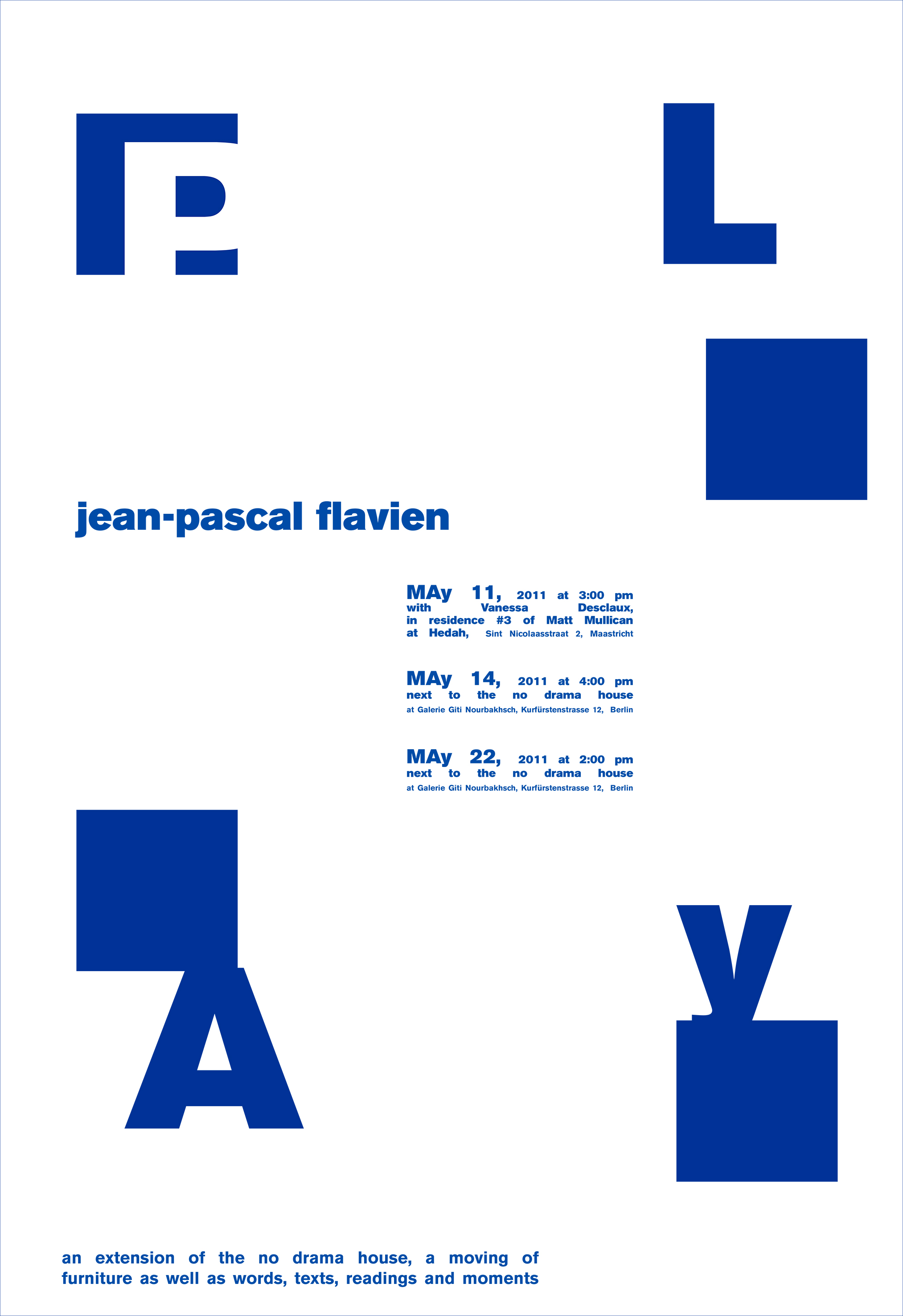
no drama house
2009 – 2012
Kurfürstenstrasse 12, Berlin
Galerie Giti Nourbakhsch
Kurfürstenstrasse 12, Berlin
Galerie Giti Nourbakhsch
The no drama house was built in Berlin in the garden of the Galerie Giti Nourbakhsch. I designed and fabricated furniture specifically for this house. Two Devonian Press publications were produced for this project. A performative event, titled PLAy, was held at the house and then restaged at the Jan van Eyck Academie in 2011. A series of seventy microfilms was also made to document activities and gestures performed in and around the house. These films were shown first on the walls of the house, then at the South London Gallery as part of an event titled Cinonema in 2012. Arrangements of the furniture in various sequences were exhibited at the Kunstverein Langenhagen the same year.
I made a house with problems, not because I was attracted to problems, but because I was doubtful of their nature within the bothersome context of a spatial design whose function is defined as the resolution of these problems. To resolve nothing. To not find solutions and leave things in an open state, and then let them multiply. And then to let many problems, a suite of problems, problems of space, time, and means design a house and circumscribe an activity. The no drama house has as its plan the addition of one problem onto another, or their alignment. It is one meter wide, the electrical layout is uneven, it is too close to the wall, it spills onto the path. The house becomes a game and the life that takes place within it is the articulation of these states of affairs. Then, with time, these problems no longer hold. They efface themselves to become what they were dissimulating: situations. These function in a sequence, they condition and describe an activity that always leads to another. There are no stairs so I bring a ladder. I lose the ladder so I work downstairs instead. What at first seems like a spatial constraint is in fact only the nature of another space that we have ceased to neglect. The rooms are too narrow, there is too much furniture upstairs, none of the pieces of furniture can be moved without moving another piece, they form a line of which I am a part. That line is a sequence or a phrase that articulates what I am doing.
I sit, I work, I sleep, I sit.
The house introduces several equations:
living = writing, living = playing.







cinonema
2012
Galerie Giti Nourbakhsch, Berlin
South London Gallery, London
Galerie Giti Nourbakhsch, Berlin
South London Gallery, London
Without drama, that is to say without gravity or seriousness, only acts and actions. And for many of them, a film, a laconic microfilm curtailed by the end of the action it documents. The films are not edited; they appear and disappear, not necessarily in the same place each time. These projections (one in the house, three onto its exterior walls) produce a form of cinema that condenses itself: Cinonema for no drama cinema. These projections fold the house into itself, turning it into a screen, a projector, and into the protagonist of its own film. Meanwhile, the public unconsciously mimics gestures that appear in the films.
Cinonema was conceived as a dual event, which took place both at the house and at the South London Gallery. By being linked to an institution, the Berlin house projects itself onto another space, onto its interior, its exterior, and its furniture.


PLAy
2012
Galerie Giti Nourbakhsch, Berlin
&
Jan van Eyck Academie, Maastricht
Galerie Giti Nourbakhsch, Berlin
&
Jan van Eyck Academie, Maastricht
While living in the house, I rearrange other people’s phrases or my own, I reorganize the sequence of furniture in relation to my activity. PLAy is an event where such lines, such sequences or phrases, are deployed in front of a public, in the house’s shadow, and like texts, they are read silently, they are whispered, they are read out loud, or they are given to be read by someone else. They are then unfolded, arranged over time.
These sequences were rearranged and read another time with Vanessa Desclaux on the occasion of a brief move of the furniture to the Jan van Eyck Academie in Maastricht.









